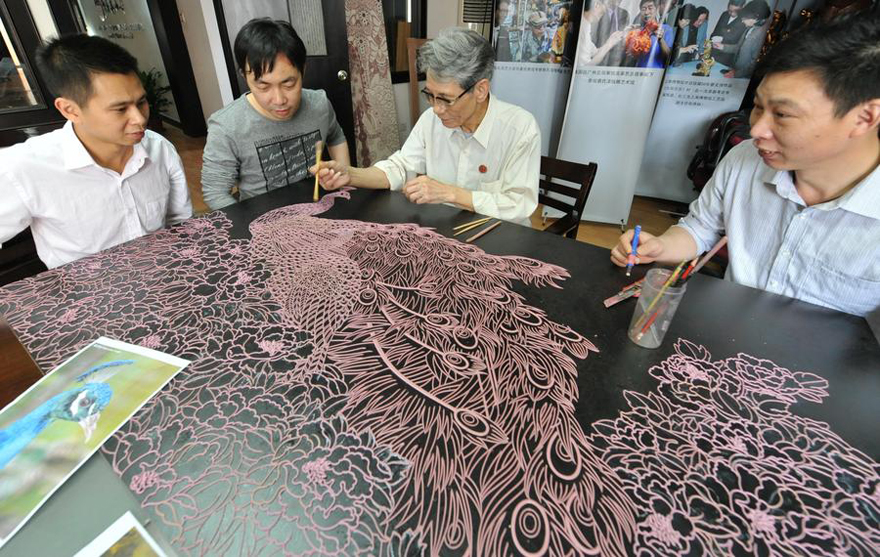 |
|
Handicraftsman Cai Shuikuang (2nd R) instructs his apprentices in Xiamen, Southeast China's Fujian province. Cai Shuikuang is the 12th generation disciple of Cai Lacquer Thread Sculpture, which has a history of more than 300 years and has been listed as the state-level non-material cultural heritages in China. [Photo/Xinhua]
|
It was not until the Qing Dynasty (1644-1911) that lacquer thread sculpture came into its heyday. The making required months of hard work, and up-scale products were often coated with pure gold. These artworks were especially valuable and so were well-received among the upper class as symbols of wealth and high social status. Lacquer thread sculpting thrived in Fujian and soon made its way to the rest of the country. The Fujian people's merchant tradition and tendency to seek their fortunes abroad also helped to spread the craft's popularity beyond China.
Making a lacquer thread sculpture involves two major procedures – carving the figurine and then decorating it with lacquer threads. Most craftsmen are skillful in only one of them, so have to team up with others. However, the Cai family in Xiamen is proficient in the entire process and has produced a number of masters in the field.
We Recommend:
